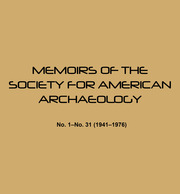Crossref Citations
This article has been cited by the following publications. This list is generated based on data provided by Crossref.
Toll, H. Woicott
1978.
Quartzite Qua Lithic Material in Archaeology:.
Plains Anthropologist,
Vol. 23,
Issue. 79,
p.
47.


